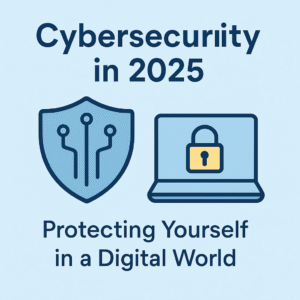Detecting and Preventing Phishing Attacks

Phishing is one of the most common and dangerous cyber threats in 2025. Attackers send fake emails or messages that look real, tricking users into revealing passwords, credit card details, or personal data.
In this blog, we’ll go beyond the basics and look at how phishing works, and how to detect and prevent it with technical examples.
🔍 How a Phishing Attack Works
- The Trap – The attacker sends an email pretending to be a trusted source (bank, office, or even Amazon).
- The Hook – The email contains a malicious link or attachment.
- The Catch – Once clicked, it either:
- Steals login details (via fake login pages).
- Installs malware on the system.
📧 Example of a Phishing Email
Here’s a simplified phishing email:
From: support@bank-secure.com
Subject: Urgent: Verify Your Account Now
Dear User,
We detected suspicious activity in your account.
Please verify your details immediately to avoid suspension.
Click here: http://fakebank-login.com
Thank you,
Bank Security Team
➡️ Looks real, but the domain is fake (fakebank-login.com instead of bank.com).
🛡️ How to Detect It (Technical Signs)
- Check the sender’s email address → Often looks similar but slightly different (e.g., bank-secure.com vs bank.com).
- Hover over the link → Real link: https://bank.com/login | Fake link: http://fakebank-login.com.
- Look for HTTPS & certificate → No SSL or invalid certificate is a red flag.
- Unexpected urgency → Emails that push “urgent action” are suspicious.
💻 Preventing Phishing (Technical Steps)
- Enable SPF, DKIM, and DMARC
If you run a business or domain, secure your emails with these DNS records:
SPF Record Example:
v=spf1 include:_spf.google.com ~all
DKIM Example (partial):
v=DKIM1; k=rsa; p=MIGfMA0GCSq…
DMARC Example:
v=DMARC1; p=quarantine; rua=mailto:security@example.com
👉 This helps mail servers detect fake emails pretending to be you.
- Use Email Security Tools
- Install anti-phishing filters (e.g., Proofpoint, Mimecast, Microsoft 365 ATP).
- Enable Gmail/Outlook advanced phishing protection.
- Educate Users with Real Examples
Regularly train teams with phishing simulations. Example:
- IT sends a fake email → see how many employees click → provide instant training.
- Enable Browser Protections
Modern browsers (Chrome, Edge, Firefox) have phishing site detection. Ensure users don’t disable these settings.
🚀 Final Thought
Phishing is simple but powerful. One wrong click can expose sensitive data or compromise entire systems.
👉 By combining technical defenses (SPF/DKIM/DMARC, filters, SSL checks) with user awareness, you can drastically reduce phishing risks.
Stay secure — and stay tuned with HackerXone for more technical security guides.
